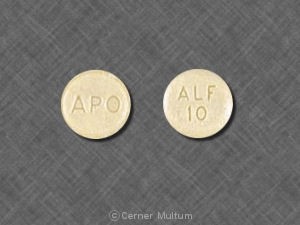
Contents
Uroxatral Side Effects, Warnings, and Drug Interactions
Uroxatral is a selective antagonist of post-synaptic alpha1-adrenoreceptors used in adult men to treat slow urination caused by benign prostatic hyperplasia (BPH).
Common side effects of Uroxatral include dizziness, headache, tiredness, postural hypotension, and fainting.
Serious side effects of Uroxatral include chest pain, priapism, liver injury, and floppy eye syndrome.
Uroxatral may have interactions with ketoconazole, itraconazole, ritonavir, blood pressure reducing medications, and PDE-5 inhibitors.
Uroxatral is not used by women; studies in animals have shown no evidence of fetal toxicity, even with high doses of Uroxatral.
Important Side Effects of Uroxatral
The most common side effects of Uroxatral are dizziness, headache, tiredness, postural hypotension, and fainting.
Possible serious side effects include chest pain, priapism, liver injury, and floppy eye syndrome.
Uroxatral Side Effects for Healthcare Professionals
Clinical Trials Experience
Because clinical trials are conducted under varying conditions, adverse reaction rates observed in the trials of a drug cannot be directly compared to rates in trials of another drug and may not reflect the rates observed in clinical practice.
In placebo-controlled trials, 4% of patients taking Uroxatral withdrew from the trial due to adverse reactions, compared with 3% in the placebo group.
Table 1 summarizes adverse reactions occurring in ≥2% of Uroxatral-treated patients and more frequently than with placebo in 3-month placebo-controlled trials.
| Adverse Reaction | Placebo (n=678) |
Uroxatral (n=473) |
| Dizziness | 19 (2.8%) | 27 (5.7%) |
| Upper respiratory tract infection | 4 (0.6%) | 14 (3.0%) |
| Headache | 12 (1.8%) | 14 (3.0%) |
| Fatigue | 12 (1.8%) | 13 (2.7%) |
Adverse reactions occurring in 1% to 2% of Uroxatral-treated patients and more frequently than with placebo are listed alphabetically by body system and frequency.
Body as a whole: pain
Reproductive system: impotence
Signs and Symptoms of Orthostasis in Clinical Trials: Approximately 20% to 30% of patients in these trials were taking antihypertensive medication.
Table 2 shows the number of patients with symptoms associated with orthostasis in 3-month placebo-controlled clinical trials.
| Symptoms | Placebo (n=678) |
Uroxatral (n=473) |
| Dizziness | 19 (2.8%) | 27 (5.7%) |
| Hypotension or postural hypotension | 0 | 2 (0.4%) |
| Syncope | 0 | 1 (0.2%) |
Testing for blood pressure changes or orthostatic hypotension was conducted in three studies.
Decreased systolic blood pressure was observed in 1 (0.2%) of the 469 Uroxatral patients. Decreased diastolic blood pressure was observed in 4 (0.9%) of the Uroxatral patients. A positive orthostatic test was seen in 31 (6.6%) of the Uroxatral patients.
Post-Marketing Experience
The following adverse reactions have been identified during post-approval use of Uroxatral: edema, tachycardia, chest pain, angina pectoris in patients with pre-existing coronary artery disease, atrial fibrillation, diarrhea, hepatocellular and cholestatic liver injury, rhinitis, priapism, rash, pruritis, urticaria, angioedema, toxic epidermal necrolysis, flushing, and thrombocytopenia.
In some patients on or previously treated with alpha adrenergic antagonists, a variant of small pupil syndrome known as Intraoperative Floppy Iris Syndrome has been reported during cataract surgery.
Drug Interactions
CYP3A4 Inhibitors
Uroxatral should not be used with ketoconazole, itraconazole, or ritonavir, since alfuzosin blood levels are increased.
Alpha Adrenergic Antagonists
Uroxatral should not be used in combination with other alpha adrenergic antagonists.
Antihypertensive Medication and Nitrates
There may be an increased risk of hypotension/postural hypotension and syncope when taking Uroxatral with anti-hypertensive medication and nitrates.
PDE5 Inhibitors
Caution is advised when alpha adrenergic antagonists, including Uroxatral, are coadministered with PDE5 inhibitors. Concomitant use of these two drug classes can potentially cause symptomatic hypotension.
Summary
Uroxatral is used in adult men to treat slow urination caused by BPH. Common side effects include dizziness, headache, tiredness, postural hypotension, and fainting. Serious side effects include chest pain, priapism, liver injury, and floppy eye syndrome. Uroxatral may have interactions with ketoconazole, itraconazole, ritonavir, blood pressure reducing medications, and PDE-5 inhibitors. It is not used by women.


